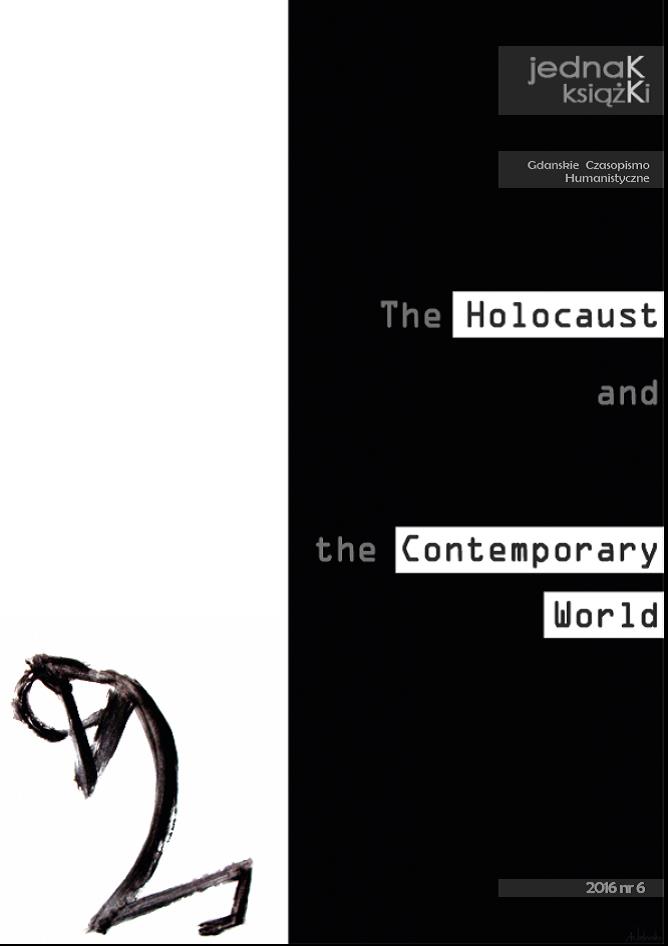Constructive Distance: Nicole Krauss’s "Great House" as a Model for Third-Generation Holocaust Fiction
Słowa kluczowe:
Holocaust fiction, Third generation, Nicole Krauss, Great HouseAbstrakt
As the final Holocaust survivors pass, the urgent task of representing the atrocity in order to keep its memory alive passes to later generations. In the past ten to fifteen years, the third generation (defined here as the grandchildren of survivors) have begun producing inventive and celebrated works of literature that explore the Holocaust from a unique position of generational distance. While psychoanalytic theory has started examining the impact of inherited trauma on the third generation, there is currently little scholarship on the unique characteristics of third-generation fiction and the position from which it is written. As an author whose Jewish grandfather survived the Holocaust, I would suggest that the ethics of representing the atrocity poses particular challenges and opportunities for the third-generation writer. Authors of this generation face a unique ethical conundrum, I argue, in that they are simultaneously connected to and twice-distanced from the event they seek to explore.
In this paper, I adapt Marianne Hirsch’s notion of second-generation postmemory to consider a particular third-generation novel, Nicole Krauss’s Great House. I suggest that Krauss’s text is ethically valid not despite but because of its author’s generational distance from the Holocaust. Krauss uses distancing techniques in the structure and content of her novel to highlight her twice-mediated knowledge of the atrocity. By drawing attention to her remoteness from the Holocaust, Krauss enables readers to compare their own dormant knowledge of the atrocity against the version being presented in the text. In this way, she leads readers away from a passive or complacent reading of history towards a more active one. Krauss’s model suggests that the post-generation author’s inevitable distance from the Holocaust is in fact a necessary and productive ingredient of contemporary Holocaust fiction.
Downloads
Bibliografia
Berger Alan L. and Milbauer Asher Z. 2013. “The Burden of Inheritance.” Shofar 31 (3): 64-85. Accessed May 22, 2015. DOI: 10.1353/sho.2013.0050.
Bos Pascale. 2003. “Positionality and Postmemory in Scholarship on the Holocaust.” Women in German Yearbook 19 (1): 50-74.
Eaglestone Robert. 2004. The Holocaust and the Postmodern. Oxford: Oxford University Press.
Finkielkraut Alain. 1994. The Imaginary Jew. Lincoln: The University of Nebraska Press.
Flanzbaum Hilene. 2012. “The Trace of Trauma: Third-Generation Holocaust Survivors.” Phi Kappa Phi Forum 92 (1): 13-15. Accessed February 22, 2015. http://search.proquest.com/docview/926220840?accountid=13552.
Foer Jonathan Safran. 2002. Everything Is Illuminated. London: Penguin.
Foer Jonathan Safran. 2011. Interview with Michael Williams. The Wheeler Centre, October 2. Accessed March 15, 2015. http://www.wheelercentre.com/broadcasts/jonathan-safran-foer.
Hirsch Marianne. 1992. “Family Pictures: Maus, Mourning, and Post-Memory.” Discourse 15 (2): 3-21. Accessed May 11, 2015. http://www.jstor.org/stable/41389264.
Hirsch Marianne. 1996. “Past Lives: Postmemories in Exile.” Poetics Today 17 (4): 659-686. Accessed April 13, 2015. DOI: 10.2307/1773218.
Hirsch Marianne. 1997. Family Frames: Photography, Narrative, and Postmemory. Cambridge: Harvard University Press.
Hirsch Marianne. 2001. “Surviving Images: Holocaust Photographs and the Work of Postmemory.” Yale Journal of Criticism 14 (1): 5-37. Accessed June 9, 2015. DOI: 10.1353/yale.2001.0008.
Hirsch Marianne. 2008. “The Generation of Postmemory.” Poetics Today 29 (1): 103-28.
Hirsch Marianne. 2012. The Generation of Postmemory: Writing and Visual Culture After the Holocaust. New York: Cambridge University Press.
Hoffman Eva. 2004. After Such Knowledge: Memory, History, and the Legacy of the Holocaust. New York: Public Affairs.
Hungerford Amy. 2004. Teaching Fiction, Teaching the Holocaust, 180-190. In: Hirsch Marianne and Kacandes Irene, eds. Teaching the Representation of the Holocaust. New York: Modern Language Association.
Krauss Nicole. 2002. Man Walks Into a Room. New York: Doubleday.
Krauss Nicole. 2005. The History of Love. New York: W.W. Norton.
Krauss Nicole. 2010a. Great House. London: Viking.
Krauss Nicole. 2010b. “Nicole Krauss on Fame, Loss, and Writing About Holocaust Survivors.” Interview with Jennie Rothenberg Gritz. The Atlantic, October 21. Accessed March 3, 2015. http://www.theatlantic.com/entertainment/archive/2010/10/nicole-krauss-on-fameloss-and-writing-about-holocaust-survivors/64869/.
Lang Berel, ed. 1988. Writing and the Holocaust. New York: Holmes.
Moore Charlotte. 2011. “Desk-bound, Needing to Get Out More.” The Spectator, February 26. Accessed June 18, 2015. http://www.spectator.co.uk/2011/02/deskbound-needing-to-get-out-more/.
Raczymow Henri. 1994. “Memory Shot Through With Holes.” Yale French Studies 85: 98-105. Accessed March 2, 2015. DOI: 10.2307/2930067.
Sicher Efraim. 2000. “The Future of the Past: Countermemory and Postmemory in Contemporary American Post-Holocaust Narratives.” History and Memory 12 (2): 56-91. Accessed April 11, 2015. DOI: 10.2979/his.2000.12.2.56.
Spence Marya. 2010. “The History of a Desk: Publishers Weekly Talks with Nicole Krauss.” Publishers Weekly 257 (31): 35.
Weissman Gary. 2004. Fantasies of Witnessing: Postwar Efforts to Experience the Holocaust. Ithaca: Cornell University Press.

 Uniwersyteckie Czasopisma Naukowe
Uniwersyteckie Czasopisma Naukowe




